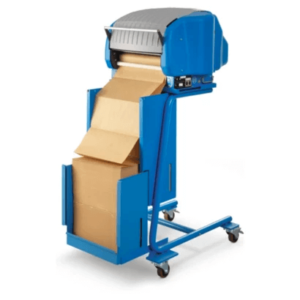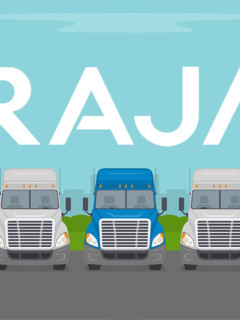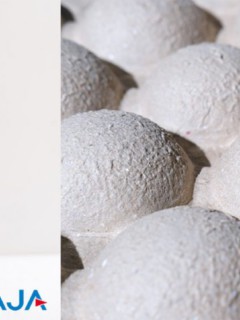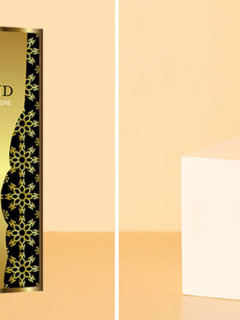In connection with packaging, the same terms are used again and again: primary packaging and secondary packaging, for example. Product packaging and service packaging. Shipping and transport packaging. But what exactly is behind these terms? And do you use them correctly? In this blog article, we explain the variety of packaging types and provide an overview.
You need products to package your products – you’ll find them in the RAJA shop!What is packaging?
Packaging is a container that is used to wrap, protect, secure, organise or professionally transport any product. In short: packaging is the inconspicuous hero that we encounter almost every day. After all, many products require suitable packaging in order to be stored, distributed and sold. In the world of packaging, we find a wide range of different materials such as plastic, paper, glass or metal. Depending on the needs of the product, packaging is also produced in different shapes and sizes.
Packaging therefore fulfils a variety of tasks. The various types differ depending on the intended use. The right choice depends above all on the product and the entire packaging process. The intended storage, transport, environmental conditions such as temperature and humidity, stackability and even the return procedure in e-commerce are just some of the factors that influence the choice of suitable packaging. At the same time, the product itself plays a key role. Whether robust or fragile, perishable, angular, light or heavy – every product requires a customised packaging solution. In order to choose the best option, we need to understand what types of packaging are available.
What is meant by the terms primary, secondary and tertiary packaging?
Generally speaking, packaging types can be divided into three categories according to their function. Let’s first take a closer look at the difference between primary , secondary and tertiary packaging.
As the names suggest, the wrapping of a product can consist of different packaging layers, similar to an onion. Here, the proximity to the product is described from the inside to the outside.
Primary packaging
Primary packaging is the packaging that directly surrounds and touches the product. It is therefore often referred to as individual packaging. Whether it is cosmetic tubes for creams, plastic containers for yoghurt or cardboard packaging for muesli or electronic devices, it is the first layer of protection. Their main task is to protect against external influences such as moisture, dirt or damage. The product should be well packaged, particularly during dispatch, storage and sale, so that it reaches the customer in perfect condition and without any loss of quality.
However, primary packaging is not only a protective shield, but also a packaging hero with a message for your brand, as it often provides information about the product. From the product name, the exact ingredients, to the origin, instructions for use and recycling marks, they play a crucial role in labelling the product.
Secondary packaging
The second packaging layer is called secondary packaging. It is used to combine several individual products or to bundle the primary packaging, protect it and organise it for transport. Basically, it is the cardboard packaging around the individually shrink-wrapped muesli bars.For this reason, secondary packaging is also referred to as secondary or collective packaging. Mostly used for grouping and presentation purposes, they are also omitted where possible for environmental reasons.
Tertiary packaging
Tertiary packaging is the packaging that the end consumer rarely sees. It is the outermost layer and combines the primary and secondary packaging into a single unit. It serves to protect the product during storage and despatch and holds several products together. It also ensures space-saving storage. At the same time, it is the most robust and stable part of a packaging unit. Examples include shrink film or stretch film for securing load units.Packaging types in detail
In addition to the three packaging categories, further subdivisions can be made depending on the purpose for which the packaging is used. You have certainly heard of product packaging, shipping packaging or service packaging. But do you know the exact difference? Let’s take a closer look at the individual types of packaging.Sales packaging
Sales packaging is generally packaging that is filled with goods and offered to the consumer for purchase. Sales packaging includes product packaging, service packaging and shipping packaging, which we would like to take a closer look at below.Product packaging
Product packaging refers to all packaging that directly or indirectly wraps the product. This can be primary packaging (e.g. the cosmetic tube for creams) or secondary packaging (e.g. the cardboard packaging for the cream). Basically, for example, almost all food in the supermarket is wrapped in product packaging. In addition to protection, functionality and user-friendliness also play a decisive role in customer satisfaction. When making your selection, ask yourself the following question: How easy is it for the customer to open, use, recycle or dispose of the packaging? An appealing design also helps to increase the attractiveness of a product and thus increase sales opportunities.The variety of products is matched by the diversity of the individual product packaging, which is often optimally tailored to the objects. A good example of this is flower packaging or book packaging, which has been specially developed for correct transport and safe despatch.
Service packaging
Product packaging also includes service packaging. Its main task is to protect food from external influences until it is consumed. This includes bags for bread rolls or fruit as well as pizza boxes. They are normally only filled immediately before the goods are handed over to the end consumer, which means they are in use for a relatively short time. Vacuum packaging, on the other hand, is particularly suitable for keeping your food fresh for longer. If you would like to find out more about food packaging, we recommend our blog post: What is the purpose of food packaging?Shipping packaging
Sales packaging also includes shipping packaging. In short, all packaging that ensures the reliable transport of objects or products so that they arrive at their destination undamaged is referred to as transport packaging. The materials and shapes of the various types of packaging are as varied as the products themselves. They can be made of cardboard, plastic, wood or metal.Have you already explored our range? You can also discover this packaging category with us: from fusible packaging to foam padding and bubble foam packaging to shipping bags, envelopes and shipping tubes.
Outer packaging
What exactly is hidden behind the term: outer packaging? This type of packaging is additional packaging that is used to re-wrap products that are already packaged, for example in sales packaging. This additional wrapping also helps to further secure the goods during transport in order to bundle them for sale or make them more attractive. They can be made of various materials, such as cardboard, plastic, film or other packaging materials. Sometimes they are also used for marketing reasons to add additional information. Outer packaging can be categorised as both secondary and tertiary packaging. In addition to the useful aspects, such as additional protection or increased attractiveness, they can also be easily criticised. Especially if they are seen as superfluous from an environmental point of view and cause additional waste.Transport packaging
Have you ever thought about how your favourite products end up on the shelves safely and undamaged? Behind the scenes in retail, transport packaging plays an important role. Packaged foodstuffs stacked on Euro pallets and wrapped in stretch film or large electronic devices shipped in sturdy cardboard boxes with special padding are things that customers rarely see because they are not intended for direct use by the end consumer. Transport packaging belongs to the category of tertiary packaging and is primarily used in the B2B sector and plays a key role in the safe transport of goods. They are often characterised by their size and unwieldiness.Packaging law
If you look at the large number of different types of packaging, you inevitably realise how much packaging is in circulation. As useful as the different types of packaging are, they also generate a large amount of waste products in terms of the environment. However, packaging is not bad per se, but should ideally be used consciously, i.e. avoided wherever possible and returned to the cycle. In recent years, consumers have been paying increasing attention to sustainable packaging and recycled packaging products.In order to counteract the constant increase in packaging volumes, there are also legal principles to counteract this process. A Packaging Act has therefore been in place since 1 January 2019, replacing the previous Packaging Ordinance.
In a nutshell: This is what the packaging law says
The law aims to promote the prevention and recycling of packaging waste and reduce environmental damage. The aim is to ensure that recycling and environmental protection are implemented effectively and that those who put packaging into circulation actively participate in the process of recycling it.
For example, manufacturers of packaging filled with goods are required to register and participate in the system. This means that they must register with the LUCID packaging register before packaging filled with goods is placed on the market. In addition, participation in one or more dual systems is required for proper disposal and recycling. The law has set certain recycling quotas for various packaging materials. The systems are obliged to fulfil these quotas and thus contribute to increasing recycling.
However, as with all regulations, the same applies here: Those who do not comply with the regulations must expect consequences such as penalties and fines. It is therefore important for companies that place packaging on the market to keep an eye on the Packaging Act.
For further and up-to-date information, we therefore recommend visiting the website of the Federal Environment Agency and the Central Packaging Register Foundation.















